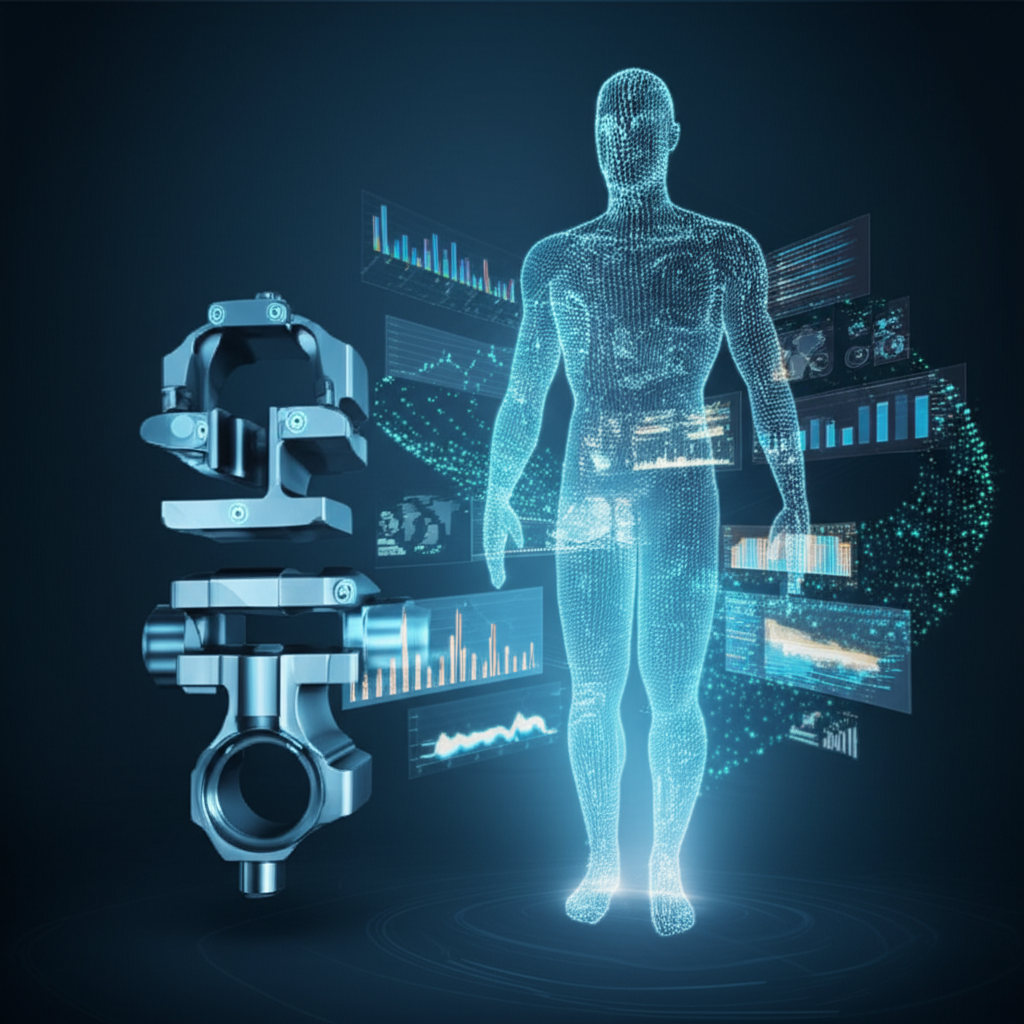The Future of Automotive Forging: Essential Tech Trends

TL;DR
The future of automotive forging technology is being reshaped by the industry's pivot to electric vehicles (EVs) and a greater emphasis on sustainability. This evolution drives major trends, including a demand for lightweight, high-strength materials to improve efficiency, the integration of digital tools like simulation and digital twins for enhanced precision, and the adoption of green manufacturing processes to reduce environmental impact.
The Rise of Lightweight and High-Strength Materials
A primary driver shaping the future of automotive forging is the relentless pursuit of vehicle efficiency, propelled by stringent emissions standards and the growing electric vehicle market. Lightweighting is no longer a niche requirement but a fundamental principle of modern vehicle design. Forged components made from advanced materials like aluminum alloys, high-strength steels, and titanium alloys are in high demand because they reduce overall vehicle weight without compromising structural integrity or safety. This weight reduction is critical for improving the range of EVs and enhancing the fuel economy of traditional internal combustion engine (ICE) vehicles.
The shift towards these advanced materials presents new challenges and opportunities for the forging industry. Forging aluminum or titanium alloys requires different processes and temperature controls than traditional steel. As a result, forging companies are investing in specialized equipment and refining their techniques to handle these materials effectively. For instance, the production of lightweight suspension parts, chassis components, and battery enclosures for EVs relies heavily on the ability to forge complex shapes from these advanced alloys. This trend ensures that forged parts remain essential for high-performance and safety-critical applications.
Furthermore, the benefits extend beyond performance. Lighter vehicles require less energy to move, directly contributing to lower emissions and reduced energy consumption. As sustainability becomes a key purchasing factor for consumers and a regulatory mandate for governments, the role of lightweight forged components will only grow. This focus on material innovation is a cornerstone of the industry's evolution, ensuring forged parts are integral to the next generation of efficient and eco-friendly automobiles.
Digitalization in Forging: Simulation, AI, and Digital Twins
The integration of advanced digital technologies is revolutionizing the traditionally physical process of forging, ushering in an era of precision, efficiency, and predictability. Central to this transformation are advanced simulation software and digital twin technology. Before any metal is heated or struck, engineers can now create a virtual model of the entire forging process. This simulation allows them to predict material flow, identify potential defects, and optimize die design, significantly reducing the costly and time-consuming trial-and-error phase of development. As detailed by innovators in the field, this virtual prototyping ensures higher quality and accelerates the time to market for new components.
A digital twin is a dynamic virtual replica of a physical forging press or an entire production line, updated with real-time data from sensors. This technology enables manufacturers to monitor equipment health, predict maintenance needs, and optimize performance on the fly. By analyzing data on temperature, pressure, and cycle times, artificial intelligence (AI) and machine learning algorithms can identify patterns that precede equipment failure or quality deviations. This predictive capability minimizes unplanned downtime and ensures a more consistent and reliable manufacturing process.
The application of AI extends to quality control, where automated systems can inspect components with greater speed and accuracy than humanly possible. This digital oversight guarantees that every part meets exact specifications, a critical requirement in the automotive industry. The convergence of these digital tools—simulation for design, digital twins for operation, and AI for optimization and quality control—creates a 'smart' forging ecosystem. This digital transformation is not just an incremental improvement; it represents a fundamental shift toward data-driven manufacturing that enhances every aspect of production, from initial design to final inspection.
For companies seeking to leverage these advancements, specialized manufacturers offer solutions that integrate these digital processes. For instance, custom forging services from Shaoyi Metal Technology provide IATF16949 certified hot forging, incorporating modern techniques from rapid prototyping to mass production, demonstrating the practical application of these digital trends.

The Impact of Electric Vehicles (EVs) on Forging Demand
The global transition from internal combustion engine (ICE) vehicles to electric vehicles (EVs) is fundamentally altering the demand for forged components. While the core need for strong, reliable parts remains, the specific types of components required are changing dramatically. For decades, the forging industry has supplied critical ICE parts like crankshafts, connecting rods, pistons, and camshafts. As the automotive market shifts to electric powertrains, the demand for these traditional components is projected to decline.
However, this shift also opens up significant new opportunities for forgers. EVs require a different set of specialized components that benefit immensely from the forging process. These include parts for electric motors, such as rotor shafts and gears for reduction gearboxes, which must withstand high torque and rotational speeds. Furthermore, the battery pack—the heaviest single component in an EV—requires robust yet lightweight structural parts like battery enclosures and trays to protect it and manage its weight effectively. Aluminum (often extruded or cast) is often the material of choice for these applications.
The emphasis on lightweighting is even more pronounced in EVs, where every kilogram saved directly translates to increased vehicle range. This creates a strong demand for forged suspension and chassis components made from high-strength, low-density materials. As a result, forging companies are retooling and adapting their expertise to cater to this new market. The ability to produce complex, high-strength parts makes forging an indispensable technology for the EV revolution, ensuring that the industry will not only survive the transition but thrive by supplying the critical components that define the next generation of automobiles.
Sustainability and Green Forging Practices
In response to global environmental concerns and stricter regulations, the forging industry is placing a significant emphasis on sustainability. "Green forging" is an emerging trend focused on minimizing the environmental footprint of the manufacturing process through several key initiatives. A primary focus is on improving energy efficiency. Traditional forging is energy-intensive, but modern innovations like advanced induction heating systems allow for more precise and rapid heating, drastically reducing energy consumption compared to older furnace methods. Additionally, some facilities are implementing energy recovery systems that capture and reuse waste heat, further optimizing energy use.
Material circularity is another pillar of sustainable forging. The industry is increasingly using recycled metals and developing processes to minimize material waste. Precision forging techniques, such as near-net shape forging, create components that are very close to their final dimensions, which significantly reduces the amount of scrap material that needs to be machined away. This not only conserves resources but also lowers production costs. By optimizing designs through simulation, manufacturers can ensure minimal material is wasted from the very beginning of the process.
These sustainable practices are becoming a competitive advantage in the automotive supply chain. Automakers are increasingly vetting their suppliers based on their environmental credentials, making green forging not just an ethical choice but a business imperative. By adopting cleaner technologies, reducing waste, and promoting a circular economy, the forging industry is aligning itself with the broader sustainability goals of the automotive sector. This commitment ensures that forging will continue to be a relevant and responsible manufacturing process for the future.

Navigating the Evolving Landscape of Automotive Forging
The road ahead for automotive forging is one of dynamic transformation, not obsolescence. While the components being produced are changing, the fundamental need for strong, durable, and reliable metal parts remains a constant. The key trends—lightweight materials, pervasive digitalization, the rise of EVs, and a commitment to sustainability—are not independent shifts but interconnected forces driving the industry forward. Success in this new era will belong to manufacturers who embrace these changes holistically.
From adopting advanced aluminum alloys to integrating AI-driven quality control, the forging industry is becoming smarter, cleaner, and more agile. The ability to simulate a process before it begins, monitor it in real-time with a digital twin, and produce components for an entirely new class of electric vehicles demonstrates a remarkable capacity for innovation. For stakeholders in the automotive sector, understanding these trends is crucial for anticipating market needs and building resilient, future-proof supply chains.
Frequently Asked Questions
1. What are the new trends in forging technology?
Key new trends in forging technology include the adoption of precision forging for creating complex parts with minimal waste, the integration of digital tools like simulation software and digital twins to optimize processes, and the increasing use of automation and robotics to enhance consistency and efficiency. There is also a strong focus on advanced lightweight materials like aluminum and titanium alloys and sustainable, energy-efficient manufacturing practices.
2. What is the future technology of the automotive industry?
The future of automotive technology is centered on several megatrends, including the widespread adoption of electric vehicles (EVs), the development of autonomous driving systems, and increased vehicle connectivity (V2X communication). This also involves a shift toward software-defined vehicles, where features and performance can be updated over the air, and a greater emphasis on sustainability and circular economy principles in manufacturing.
3. What is the next big thing in automotive?
Beyond the ongoing transition to electric vehicles, the next major disruption in the automotive industry is expected to be the integration of artificial intelligence (AI) at every level. AI will not only power more advanced autonomous driving features but also enable predictive maintenance, create personalized in-car experiences, and optimize manufacturing supply chains. This, combined with a focus on sustainability, will define the next generation of automobiles.
4. What is the market for forged automotive components?
The global market for forged automotive components is substantial and projected to continue growing. For example, one market analysis valued the market at $49.11 billion in 2023 and projected it to reach $75.57 billion by 2032. This growth is driven by the increasing demand for high-strength, lightweight components in both electric and traditional vehicles to improve efficiency, performance, and safety.
 Small batches, high standards. Our rapid prototyping service makes validation faster and easier —
Small batches, high standards. Our rapid prototyping service makes validation faster and easier — 
